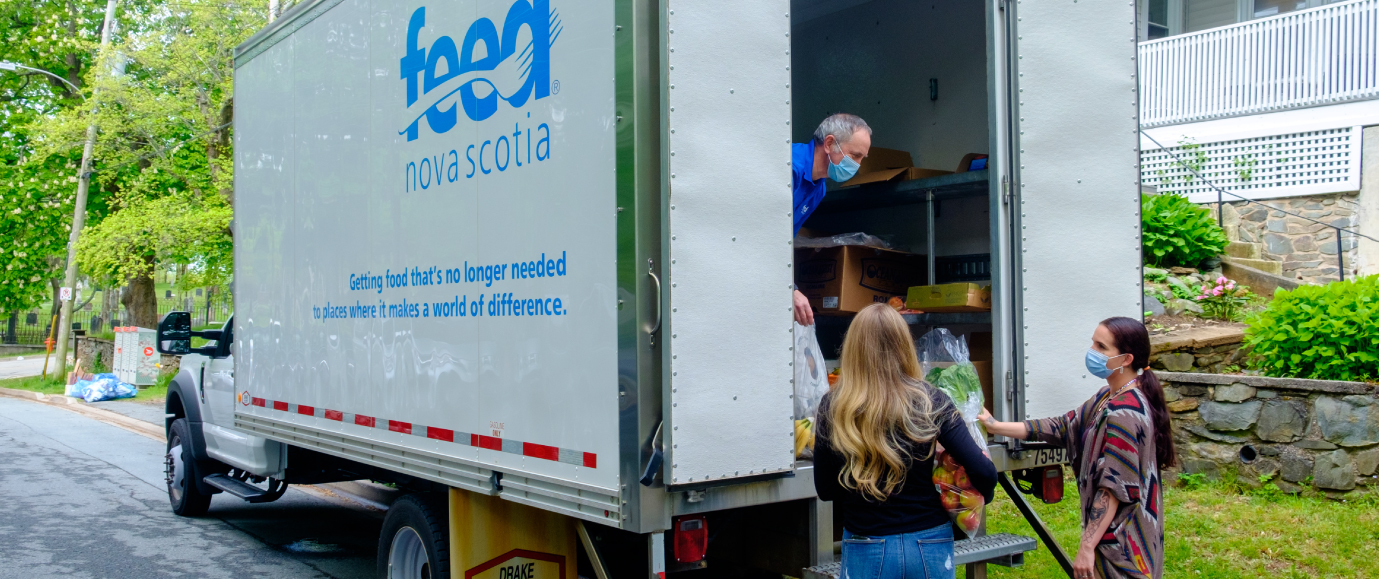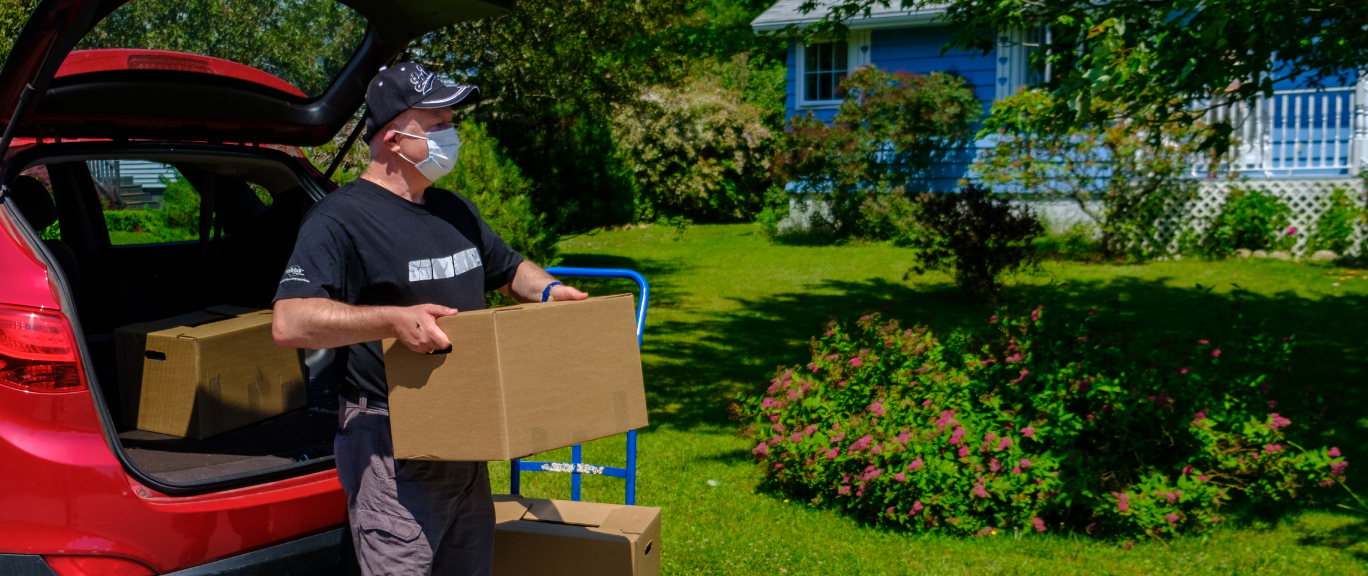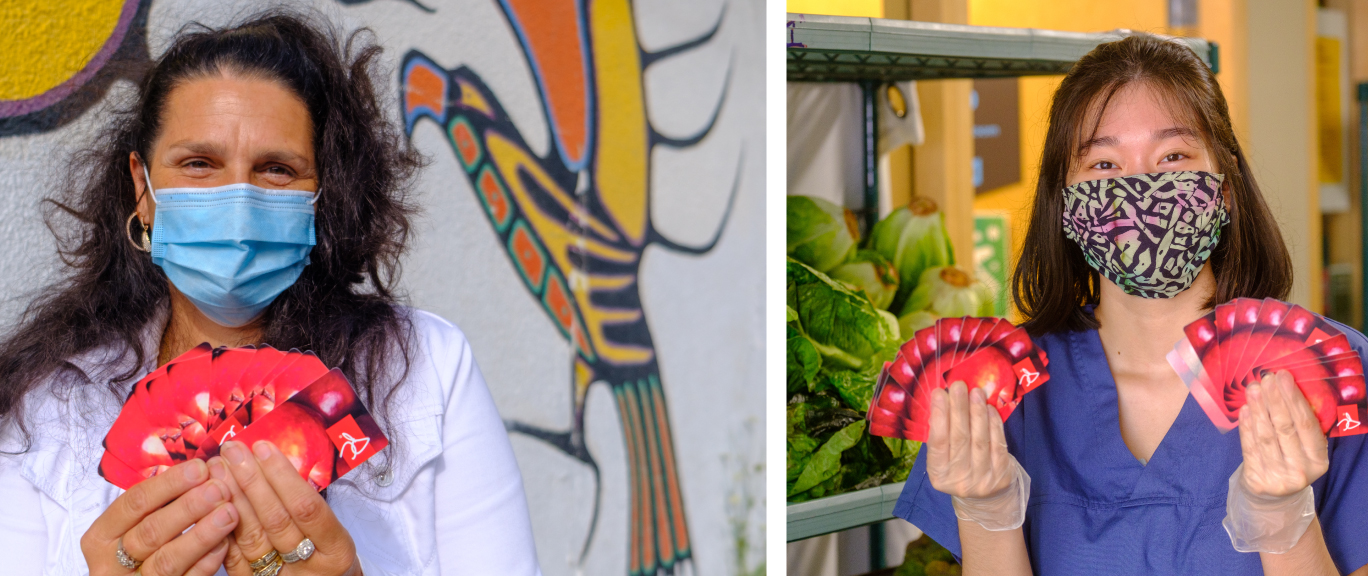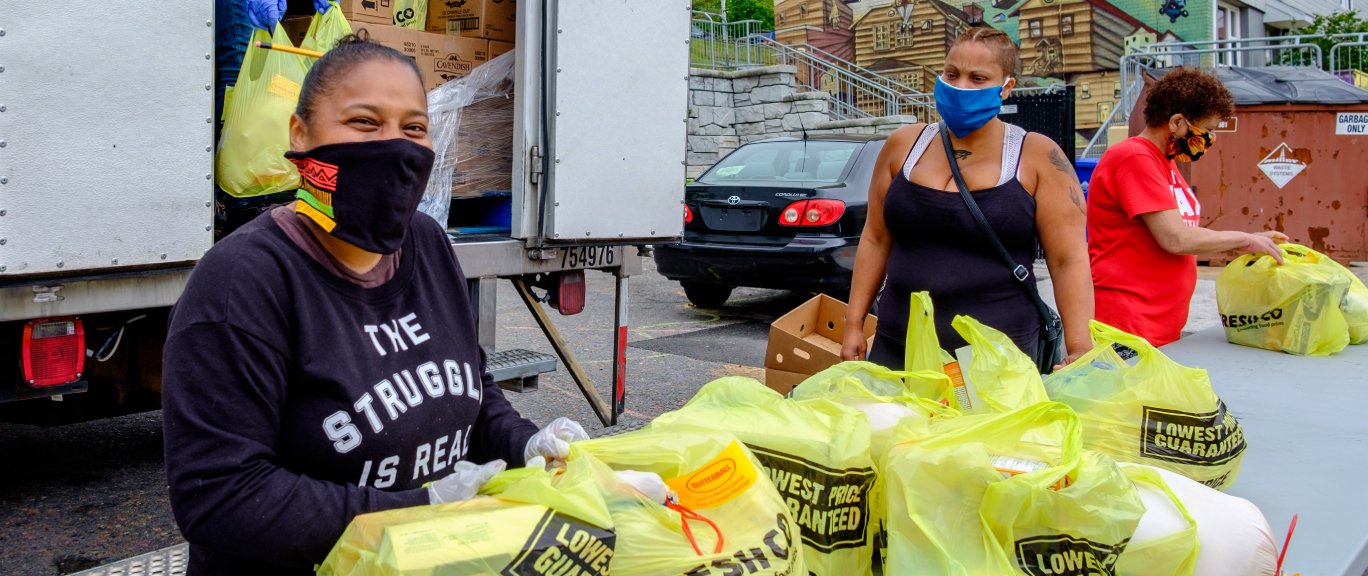What a year! Your support in action.
2020 highlighted how quickly things can change, and how the distance between having food to eat and going without is short. We're grateful for our community's support and proud to show how we put it to work.
Providing more food
We distributed 2.4 million kilograms of food to our network of 140 food banks, meal programs, and shelters across the province—up 15% from 2019. We're thrilled that 62% of that was perishable product like meat, dairy, fruit, and vegetables.

Reaching people at home
When COVID-19 hit, we introduced a short-term home delivery service to support those who are unable to get to a food bank. We set up a small call centre and hired additional warehouse support to meet the need. To date, we've delivered more than 17,000 non-perishable food boxes to 3,500 households across the province.
"A woman told me she stocks her shelves with empty boxes and cans so when her son comes to check on her, he isn't worried. As a mother, she would rather him focus on himself than have the additional stress of caring for her. When I told her we'd be delivering food, she was overjoyed." - Erica, Feed Nova Scotia emergency food support navigator

Providing flexibility
We had a tough time getting large quantities of food quickly last spring, as did others across the country. Knowing our member food banks, meal programs, and shelters could more easily meet their unique needs right in their own communities, we disbursed $1,119,150 in cheques and $278,500 in grocery cards so they could do just that. The Fundy Interchurch Food Bank in Kentville purchased food direct from farmers, providing impact in two ways: Making sure people had access to fresh produce and supporting local farms that have also been struggling. This is just one of many ways our members made a difference.

Centering equity
Black, Indigenous, and people of colour are disproportionately affected by food insecurity. To see meaningful change, we need to centre equity, diversity, and inclusion. We've made this commitment, and have started with staff training, a renewed focus on advocacy and awareness, and the development of an equity lens, but will not end there.
Getting food out quickly
The pandemic required us to adapt quickly, and no two weeks were alike. While at some points we were challenged to purchase bulk food orders, other times brought significantly high volumes of frozen food donations to our warehouse. To help ensure people could enjoy it quickly, we did a few pop up events in select communities for people to come directly to our trucks to access food.

Community support makes our work possible, and we're incredibly grateful. We look forward to building on these and other initiatives in 2021.